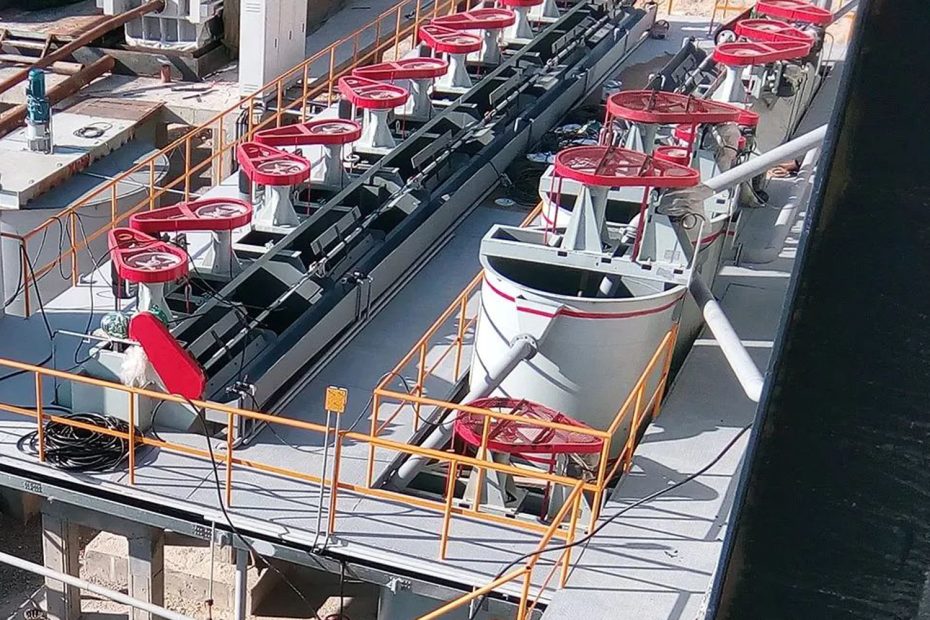Lead and zinc metals are widely used in various industrial fields. With the continuous research on lead-zinc technology, the demand for lead-zinc ore resources is also increasing. In the actual mining process, the mineral processing of lead-zinc oxide ore is relatively complicated, and at the same time, higher requirements are put forward in the ore mineral processing and smelting technology.
Three major mineral processing technologies of low-grade lead-zinc oxide ore
Reasons for difficult separation of low-grade lead-zinc ores、
The material composition is complex
Lead and zinc are extremely close in primary deposits and often co-exist. The sources of lead and zinc are the same, the electronic structure of the outer layer is similar, and the same lyotropic complexes are easy to form. There are many types of lead oxide and zinc oxide in lead-zinc ore, and zinc oxide minerals are more complex. Water-soluble zinc and willemite account for a large proportion of zinc oxide minerals. This part of zinc is difficult to float in the flotation process. Zinc mineral.

Mineral structure is complex
The formation conditions of lead-zinc ores are relatively complex, and are greatly affected by precipitation, climate, and geology. As a result, the specific structures of lead-zinc ores are also different, and the contents and distributions of lead-zinc elements are different, which directly leads to lead-zinc ores. Surface appearance varies.
Mineral processing technology of lead-zinc ore
The complexity of the composition of low-grade lead-zinc ore leads to a corresponding increase in the difficulty of its mineral processing. At present, there are sulfidation flotation, anion collector direct flotation, chelating agent neutral oil flotation and leaching flotation methods to deal with lead-zinc oxide ore. One of the more important and commonly used methods is the sulfuration flotation method.
According to the different floatability of useful minerals in lead-zinc ore, different sulfide flotation methods need to be adopted. There are mainly priority flotation, mixed flotation, and other flotation methods. According to the difficulty of floating lead and zinc, the method of first suppressing zinc to float lead, reactivating zinc, and then recovering lead and zinc concentrates in turn is the priority flotation method. After the lead-zinc concentrate is mixed and flotation, the method of separating the lead and zinc concentrate is the mixed flotation method.
Separation agents for lead-zinc ore
The mineral processing practice of lead-zinc ore is mainly based on flotation process, and the selection of reagents has an important influence on the flotation effect. Flotation reagents are mainly used to adjust and control the flotation process, weaken or improve the buoyancy of materials, so that gangue and ore can be separated to achieve the purpose of removing impurities or extracting useful ore particles. Lead-zinc ore reagents mainly include collectors , activator, inhibitor.

sorting potion 1#:Collector
In the flotation of lead-zinc ore, commonly used collectors are butyl xanthate and dixanthate, both of which have strong collection capabilities.
sorting potion 2#:Activator
Since the floatability of zinc is worse than that of lead, lead is often preferentially floated in the flotation process. Among the activators, copper sulfate is currently the activator with better activation effect.
sorting potion 3#:Inhibitors
From the perspective of environmental protection, the use of fluorine-free inhibitors is an inevitable trend, mainly including zinc sulfate and sulfite. Among them, zinc sulfate is the most important and common inhibitor in the fluorine-free process, and it is often used in combination with other inhibitors; sulfite has a better inhibitory effect under neutral and alkaline conditions, but has no inhibitory effect under acidic conditions.
In summary
The uses of lead and zinc metals are becoming more and more extensive, but the reserves of lead and zinc are relatively small, and the supply of lead and zinc resources is increasingly in short supply. Facing this situation, it is necessary to exploit and utilize lead and zinc resources more rationally. On the one hand, continue to improve the mining technology of lead-zinc ore, master better mining process and mineral processing agents; on the other hand, do a good job in the research and development of recycling technology, and improve the level of secondary utilization of lead-zinc ore. Therefore, it is recommended that mine owners do a good job of mineral processing tests before building a lead-zinc mineral processing plant, so as to avoid blindly copying the process and affecting the recovery efficiency of lead-zinc mines
